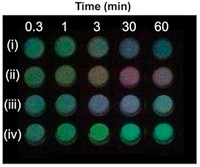Advertisement
Grab your lab coat. Let's get started
Welcome!
Welcome!
Create an account below to get 6 C&EN articles per month, receive newsletters and more - all free.
It seems this is your first time logging in online. Please enter the following information to continue.
As an ACS member you automatically get access to this site. All we need is few more details to create your reading experience.
Not you? Sign in with a different account.
Not you? Sign in with a different account.
ERROR 1
ERROR 1
ERROR 2
ERROR 2
ERROR 2
ERROR 2
ERROR 2
Password and Confirm password must match.
If you have an ACS member number, please enter it here so we can link this account to your membership. (optional)
ERROR 2
ACS values your privacy. By submitting your information, you are gaining access to C&EN and subscribing to our weekly newsletter. We use the information you provide to make your reading experience better, and we will never sell your data to third party members.
Analytical Chemistry
Device Forces Quantum Dots Into Living Cells
Cellular Imaging: Inside cells, the imaging agents could help researchers track important biomolecules
by Katherine Bourzac
November 21, 2012

When biologists want to watch the inner workings of cells, they mark proteins with fluorescent labels. With these labels, which are proteins themselves, they can track when the cell’s proteins are made, where they travel, and how they interact with other cellular players. Super-bright, long-lasting quantum dots would be useful substitutes for this labeling job, but getting the nanoparticles into cells is difficult. A new device could help: It physically squeezes cells, forcing them to take up quantum dots (Nano Lett., DOI: 10.1021/nl303421h).
Currently, biologists rely on fluorescent proteins to label biomolecules. But these proteins have limitations. There are only a handful of varieties, meaning only a few colors are available. And each protein emits light over a broad spectrum of wavelengths, so researchers have to mix and match proteins carefully to avoid significant overlap in emissions. As a result, biologists can label only a few molecules inside a cell at any given time.
Quantum dots, which are nanoscale particles of inorganic semiconducting material, don’t have these limitations. Researchers can tune the light emitted by quantum dots by changing their sizes. The nanoparticles also emit light over a very narrow spectrum of wavelengths. Biologists think quantum dots could provide a rainbow of imaging labels to simultaneously label multiple proteins and other biomolecules inside a cell. They’ve already used the nanoparticles to label and study proteins on the surfaces of cells.
But the trick is getting quantum dots into cells, says Klavs Jensen at Massachusetts Institute of Technology. Nanoparticles, including quantum dots, rarely make it into a cell’s cytoplasm because the cell encloses them inside bubbles pulled in from the cell membrane. These bubbles, called endosomes, eventually degrade the nanoparticles inside.
So his group came up with a relatively simple, high-throughput device for slipping quantum dots into the cytoplasm. The device is a set of microfluidic channels that are wide at either end and narrow in the middle. Cells and quantum dots flow through the device. The cells move easily through the wider portions at the ends of the channels, but must squeeze through the narrow points, where the diameter is 6 µm, smaller than the diameter of the cells in their undisturbed state. The researchers believe this constriction disrupts the cell membrane for a few milliseconds, causing the membrane to gape and swallow quantum dots travelling nearby.
The researchers ran ovarian cancer cells through the device and found that they took up green-glowing quantum dots made of cadmium selenide. They then did a second set of experiments to determine whether the quantum dots were indeed in the cytoplasm, and not trapped inside endosomes. They linked red dyes to the green quantum dots through a disulfide bond. Under a fluorescence microscope, this complex appears red. But in the reducing environment of the cytoplasm, the disulfide bond should break, the researchers reasoned, releasing the dye molecules and causing the nanoparticles to glow green again.
When the researchers inspected cells that went through their device with the quantum dot-dye complexes, they saw only green fluorescence, not red, proving the nanoparticles ended up in the cytosol. Using fluorescence microscopy, they found that about 40% of cells took in the nanoparticles. Over 90% of the cells survived the squeezing.
Holly Aaron, at the University of California, Berkeley, says the device should prove able to do something quantum-dot researchers have been promising for 15 or 20 years. Using this device to dose cells with quantum dots, she says, “you can visualize inside the cell, and see what different things are going on in the cytoplasm versus the mitochondria versus the nucleus.”





Join the conversation
Contact the reporter
Submit a Letter to the Editor for publication
Engage with us on Twitter